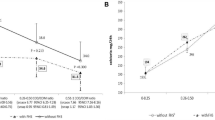Abstract
In calcium renal stones, calcium oxalate and calcium phosphate in various crystal forms and states of hydration can be identified. Calcium oxalate monohydrate (COM) or whewellite and calcium oxalate dihydrate (COD) or weddellite are the commonest constituents of calcium stones. Calcium oxalate stones may be pure or mixed, usually with calcium phosphate or sometimes with uric acid or ammonium urate. The aim of this study was to compare the clinical and urinary patterns of patients forming calcium stones of different composition according to infrared spectroscopic analysis in order to obtain an insight into their etiology. The stones of 84 consecutive calcium renal stone formers were examined by infrared spectroscopy. In each patient, a blood sample was drawn and analysed for serum biochemistry and a 24-h urine sample was collected and analysed for calcium, phosphate, oxalate, citrate and other electrolytes. We classified 49 patients as calcium oxalate monohydrate (COM) stone formers, 32 as calcium oxalate dihydrate (COD) stone formers and three as apatite stone formers according to the main component of their stones. Patients with COM stones were significantly older than patients with COD stones (P<0.002). Mean daily urinary calcium and urinary saturation with respect to calcium oxalate were significantly lower in patients with COM than in those with COD stones (P<0.000). Patients with calcium oxalate stones containing a urate component (≤10%) presented with higher saturation (P<0.012) with respect to uric acid in their urine (and lower with respect to calcium oxalate and calcium phosphate, respectively P<0.024 and P<0.003) in comparison with patients without a urate component in the stone. Patients with calcium oxalate stones with a calcium phosphate component (≥15%) showed higher (P<0.0016) urinary saturation levels with respect to calcium phosphate (and lower with respect to uric acid (P<0.009), compared with patients forming stones without calcium phosphate or with a low calcium phosphate component. Patients with calcium stones mixed with urate had a significantly lower urinary pH (P<0.002) and urinary calcium (P<0.000), and patients with calcium phosphate >15%, higher urinary pH (P<0.004) and urinary calcium (P<0.000). In conclusion, in the evaluation of the individual stone patient, an accurate analysis of the stone showing its exact composition and the eventual presence of minor components of the stone is mandatory in order to plan the correct prophylactic treatment. Patients with “calcium stones” could require various approaches dependent on the form and hydration of the calcium crystals in their stones, and on the presence of “minor” crystalline components that could have acted as epitaxial factors.
Similar content being viewed by others
References
Marangella M et al. (1985) Urine saturation with calcium salts in normal subjects and idiopathic calcium stone formers Urol Res 13: 189
Trinchieri A (1996) Epidemiology of urolithiasis. Arch Ital Urol 68: 203
Trinchieri A, Curhan G, Karlsen S, Wu KJ (2003) Epidemiology. In: Segura J, Conort P, Khoury S, Pak C, Preminger GM, Tolley D (eds) Stone disease. Editions 21, Paris, p 13
Trinchieri A, Coppi F, Montanari E, Del Nero A, Zanetti G, Pisani E (2000) Increase in the prevalence of symptomatic upper urinary tract stones during the last ten years. Eur Urol 37: 23
Gault MH, Chafe L (2000) Relationship of frequency, age, sex, stone weight, and composition in 15,624 stones: comparison of results for 1980 to 1983 and 1995 to 1998. J Urol 164: 302
Leusmann DB, Michels M (2000) Has there been a change in stone composition during the past 20 years? In: Rodgers AL, Hibbert BE, Hess B, Khan SR, Preminger GM (eds) Urolithiasis 2000. University of Cape Town, Cape Town, p 362
Murphy BT, Pyrah LN (1962) The composition, structure, and mechanisms of the formation of urinary calculi. Br J Urol 34: 129
Ackermann D, Brown P, Finlayson B (1988) COD production. Urol Res 16: 219
Daudon M, Donsimoni R, Hennequin C, Fellahi S, Le Moel G, Paris M, Troupel S, Lacour B (1995) Sex and age-related composition of 10,617 calculi analyzed by infrared spectroscopy. Urol Res 23: 319
Donsimoni R, Hennequin C, Fellahi S, Troupel S, Le Moel G, Paris M, Lacour B, Daudon M (1997) New aspects of urolithiasis in France. Eur Urol 31: 17
Bowyer RC, McCulloch RK, Brockis JG, Ryan GD (1979) Factors affecting the solubility of ammonium acid urate. Clin Chim Acta 95: 17
Smith MJV, Hunt LD, King JS, Boyce WH (1969) Uricemia and urolithiasis J Urol 101: 637
Coe FL, Kavalach AG (1974) Hypercalciuria and hyperuricosuria in patients with calcium urolithiasis. N Engl J Med 219: 1344
Marshall RW, Cochran M, Robertson WG, Hodgkinson A, Nordin BEC(1972) The relation between the concentration of calcium salts in the urine and renal stone composition in patients with calcium-containing renal stones. Clin Sci 43: 433
Author information
Authors and Affiliations
Corresponding author
Rights and permissions
About this article
Cite this article
Trinchieri, A., Castelnuovo, C., Lizzano, R. et al. Calcium stone disease: a multiform reality. Urol Res 33, 194–198 (2005). https://doi.org/10.1007/s00240-004-0459-x
Published:
Issue Date:
DOI: https://doi.org/10.1007/s00240-004-0459-x




